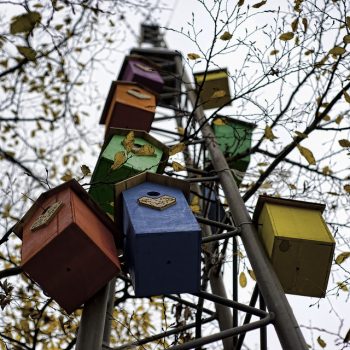
(Photo courtesy of Boegh at Flickr, CC License.)
If you come to Denmark from the south, it’ll maybe be a kind of kulturchok (culture shock) to see just how attached Danes are to their hjem [yem] (homes)! Of course, people in cities går mere i byen (go out more; literally: ”go more in the city”). Still, even in Copenhagen the answer to your nagging question Hvor er alle? (Where are all the people?) … might be hjemme [yemmeh] (at home)! After all, Danes are masters of cosy candlelight hygge… 🙂
Okay, all you learners out there, how does your dictionary translate the Danish verb at BO? It’s less flimsy than ”to stay” (as in: please stay a little longer) and more linked to places than ”to live”. I mean, at leve (to live) has something to do with your heart and your breathing, as in Man lever kun én gang (YOLO). But if you want to visit some real Danes in a real rødt murstenshus (red brick house) – go
Hvor bor I? (Where do you guys live/reside/stay?)
– Vi bor på Anemonevej 25… (We live at Anemonevej 25…)
BO is also a very Danish male name. For example, Bo Spellerberg is a handball player. And BO is even an ending denoting someone who bor somewhere, as in bybo – a man or woman living in a by (city, town).
The guy or girl next door is your neighbour in English – nabo [NAA-boh] in Danish. But Danish also has
genbo – opposite neighbour
overbo – person living in the flat above
underbo – person living in the flat below
Now, how do you get a chance to speak Danish with those people who hide away in their bolig (dwelling)? 🙂 Well, when the sun does shine, there is a chance they’ll get outside. And if you show a sincere interest in their culture and language, then maybe…
Have you got any tips on how to break the ice with stay-at-home Danes? Please share your stories below. 🙂






